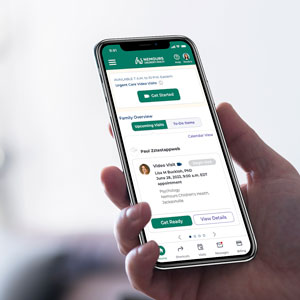Pediatric Engineering Research Lab
About the Pediatric Engineering Research Lab
The Pediatric Engineering Research Lab (PERL) has a staff of biomedical engineers and students who work with various clinicians at the Nemours Children’s Hospital, Delaware to conceive and develop engineering solutions to medical problems.
PERL has affiliations with Drexel University and University of Delaware in biomedical and mechanical engineering with full facilities for mechanical and electronic fabrication of research prototypes. We collaborate with a number of companies to manufacture and market devices conceived and developed at PERL.
Facilities, Equipment & Resources
Our lab is located in the research and administration building of the Nemours Children’s Hospital, Delaware. The lab has 1,500 square feet of lab and office space, along with six PC workstations. All PERL computers are Internet-connected to three rehabilitation robotic devices including a PHANTOM haptic input device, sensors to measure force Assurance Technologies six-axis load cells, and strain gauge load cell fabrication.
Additional equipment includes:
- Nikon Florescence Microscope With Image-Pro Plus Imaging Software
- Dimension 3D Printer (Model SST 1200 ES)
- Fortus 3D Printer (Model 400mc)
- Laser Scanner EXASCAN
- Delta Drill Press
- Emco Metal Lathe (Model Compact 10)
- Delta Band Saw
- Porter Cable Cut-Off Saw (Model 5028)
- Acer CNC Mill (Model MX 3)
Lab Researchers & Location
Lab Head
Tariq Rahman, PhD
Phone: (302) 651-6831
Email: tariq.rahman@nemours.org
Current Research Group
- Ellen Deutsch, MD
- William G. Mackenzie, MD
- Shanmuga S. Jayakumar, MD
- Daniel Ragonesi, BSME
- J. Richard Bowen, MD
Our Location
Nemours Children’s Hospital, Delaware
1600 Rockland Road
Wilmington, DE 19803
Phone: (302) 651-6831
Research Interests & Projects
Main Interests
The Pediatric Engineering Research Lab is involved in research of devices and therapies that will assist and rehabilitate children with neuromuscular disabilities and orthopedic disorders. These conditions include muscular dystrophy, spinal muscular atrophy, scoliosis, arthrogryposis, spinal cord injury and leg length discrepancies.
Current Projects
Projects include but are not limited to:
- The development of force-driven instrumentation for leg lengthening
- The Wilmington Robotic Exoskeleton (WREX), an anti-gravity upper limb orthosis
- The Cricket, a sensor to detect patient compliance with brace wear
- Scoliosis brace compliance sensor
- Dynamic and kinematic analysis of intubation
- Portable gait analysis devices
- Autodistraction with force-feedback


